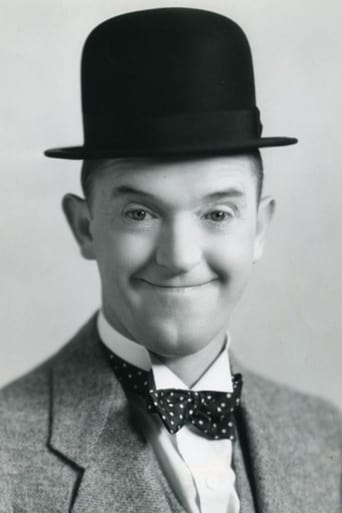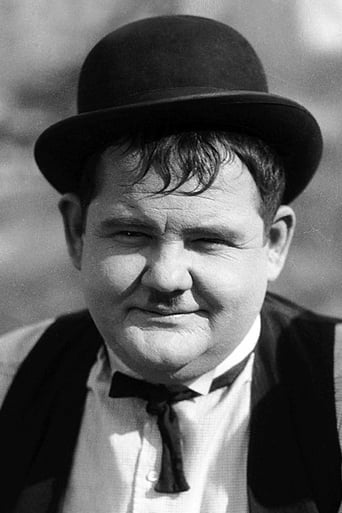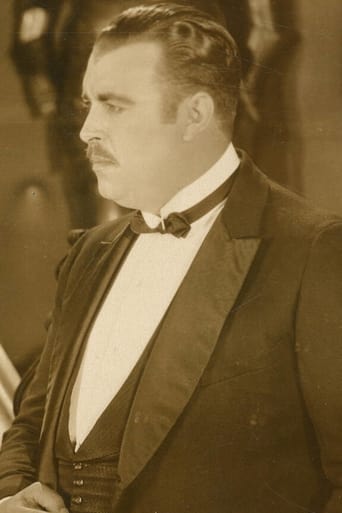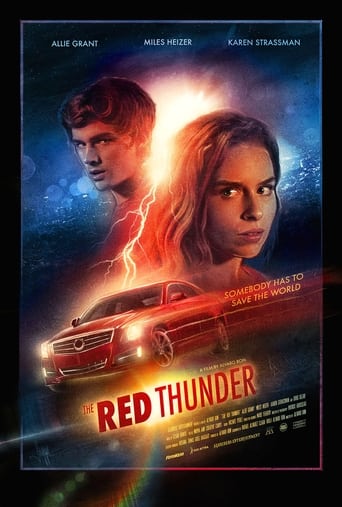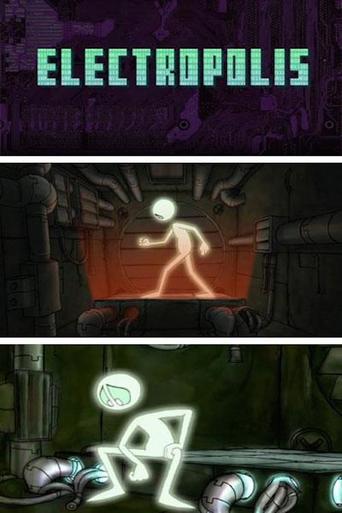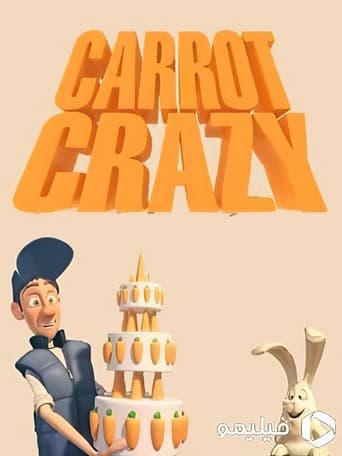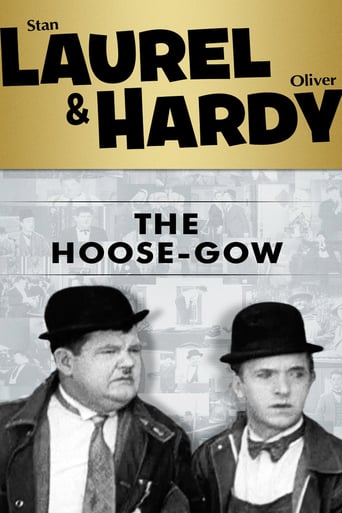
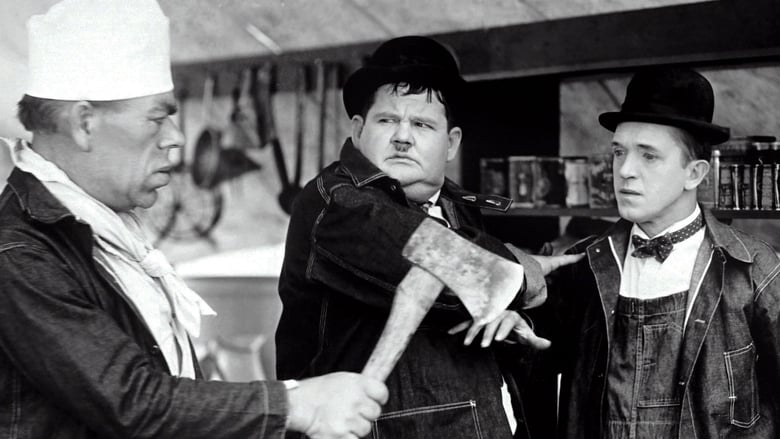
The Hoose-Gow (1929)
Stan and Ollie arrive as new inmates at a prison after apparently taking part in a hold-up raid, a raid they tell a prison officer they were only watching. The usual mayhem ensues.
Watch Trailer
Cast
Similar titles
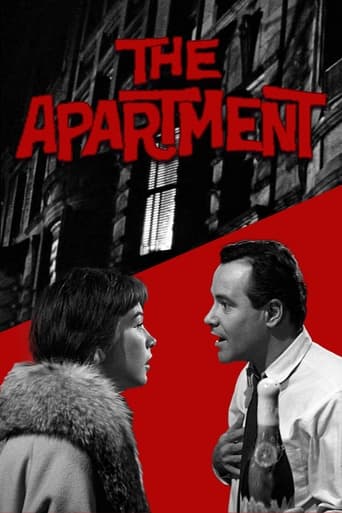
Reviews
Great Film overall
A Masterpiece!
if their story seems completely bonkers, almost like a feverish work of fiction, you ain't heard nothing yet.
It’s not bad or unwatchable but despite the amplitude of the spectacle, the end result is underwhelming.
Laurel and Hardy are already in enough trouble, having been falsely arrested and sent to prison where they should be released just so they don't accidentally burn the prison down. They end up on a chain gang, try to chop a tree down that has a prison guard attached to it, and overfilling the governor's car up with gasoline with amusing results. This was two years before they starred in their first feature, "Pardon Us", a more detailed prison comedy. While photographed by George Stevens, this has some creaky moments of little sound, but that wet goo fight at the end is straight out of the keystone cops. A disturbing visual has Laurel's mouth stuffed with a whole apple which he can't get out and had me cringing.
Despite their protestations of innocence, Laurel and Hardy find themselves on a prison working on a prison road crew where they make a shambles of an inspection visit by the governor."The Hoose-gow" was Laurel & Hardy's sixth talkie short and a step in the right direction in recovering the energy and verve of their best silent shorts. Shot almost entirely outdoors, this film doesn't have the claustrophobic, studio-bound feel that hindered some of their earlier talkies. The sound mix must have had some level of sophistication. Look at some of the road crew scenes. The wind is whipping up the branches on some of bushes right behind them. With the microphones of the time, that dialogue must've been unusable. The dubbing was fine.The plot of the film is simple but serviceable. Nothing new, but nice. It works its way to a nice, rice throwing battle, which, if not on the level of "Two Tars" or "Big Business," is certainly adequate. The supporting cast is good, featuring the always reliable Tiny Sanford and James Finlayson. Not a classic, but worth watching. Up to this point, their best talkie with the possible exception of "Men O'War."
Stan Laurel and Oliver Hardy are the most famous comedy duo in history, and deservedly so, so I am happy to see any of their films. A police patrol car pulls into a prison, and all new inmates get out, with Stan and Ollie in amongst them fidgeting over each other. Getting out, they explain that they were only watching the raid that got them in this situation, and a little kick fight (started by Ollie trying to shut Stan up) gets the Warden (Tiny Sandford) a kick too. Then Ollie explains a secret plan he has made with another prisoner, involving oranges thrown over the wall to get a rope ladder. The Warden spots these oranges, gets the boys to get rid of them, and the last in Stan's mouth is swallowed with a hard pat on the back. An orange is thrown over the wall, and the rope ladder is dangled, and the Warden chases the danglers outside the door away, and with the door open the boys run to escape, only to return with powder burns on their backsides from a gun shot. Next we see the boys on the side of the road with pickaxes, with Stan continually sticking his in Ollie's coat, and still he gets hit when he gives Stan a spade. The bell rings for a food break for all prisoners, and when the boys have nowhere to sit, they mistakingly get the Warden's table, have some pepper trouble, and are shouted away. The only way to get their food is to get loads of wood for the chef, and they find a tree to cut down, which they don't realise has a Treetop Lookout post and guard (Charlie Hall) at the top, so both fall into the below gazebo. Then everyone gets back to work with the Governor (James Finlayson) coming to inspect, and when Ollie gets his coat ripped again, he manages to throw Stan's pick-axe into the Govenor's car radiator. To stop the leak of gas a prisoner suggests filling it with rice, and this seems to work until the car starts to drive and the radiator erupts with this gas/rice mixture. The Warden pushes Stan in the mound of mixture as lesson, and Stan throws some in his face, and throwing back the Warden manages to hit the Governor. So the Governor accidentally hits Ollie, and soon enough everyone including the two women in the car, other prison staff and all the inmates are throwing this mixture at each other. With this chaos going on, the boys run away, and the Warden and Governor decide to get the Manager to stop the whole thing, and they reverse a car into a cart carrying barrels of white paint, which spills on the boys hiding in the back of the car. Filled with wonderful slapstick and all classic comedy you could want from a black and white film, it is an enjoyable film. Stan Laurel and Oliver Hardy were number 7 on The Comedians' Comedian. Good!
An early Laurel & Hardy talkie, `The Hoose-Gow' is strongest in its first half the pathetic attempts at escape, the sheer terror on Stan's face as he tries to dislodge the apple from his mouth, the absolute fear and despondency of two child-souls set down amongst a hardened prison population. Also priceless: Ollie's guileless explanation to guard Tiny Sanford: "Honest, officer, we were only watching the raid." Somehow, coming from Stan and Ollie, the statement rings of truth. In the work camp, things settle into the traditional Stan and Ollie mealtime gags. When they chop down the lookout's post it's another of those gags of anticipation which was such an integral part of their humor. And it's to their credit that most of the film is shot on location, something uncommonly problematic for the early sound technology of the late 20s. There is also something wistfully nostalgic about those Arcadian, windswept eucalyptus-lined locations of southern California, so unpopulated in 1929. Once they get involved in the creamed rice fight at the end, it descends into rather standard fare.
